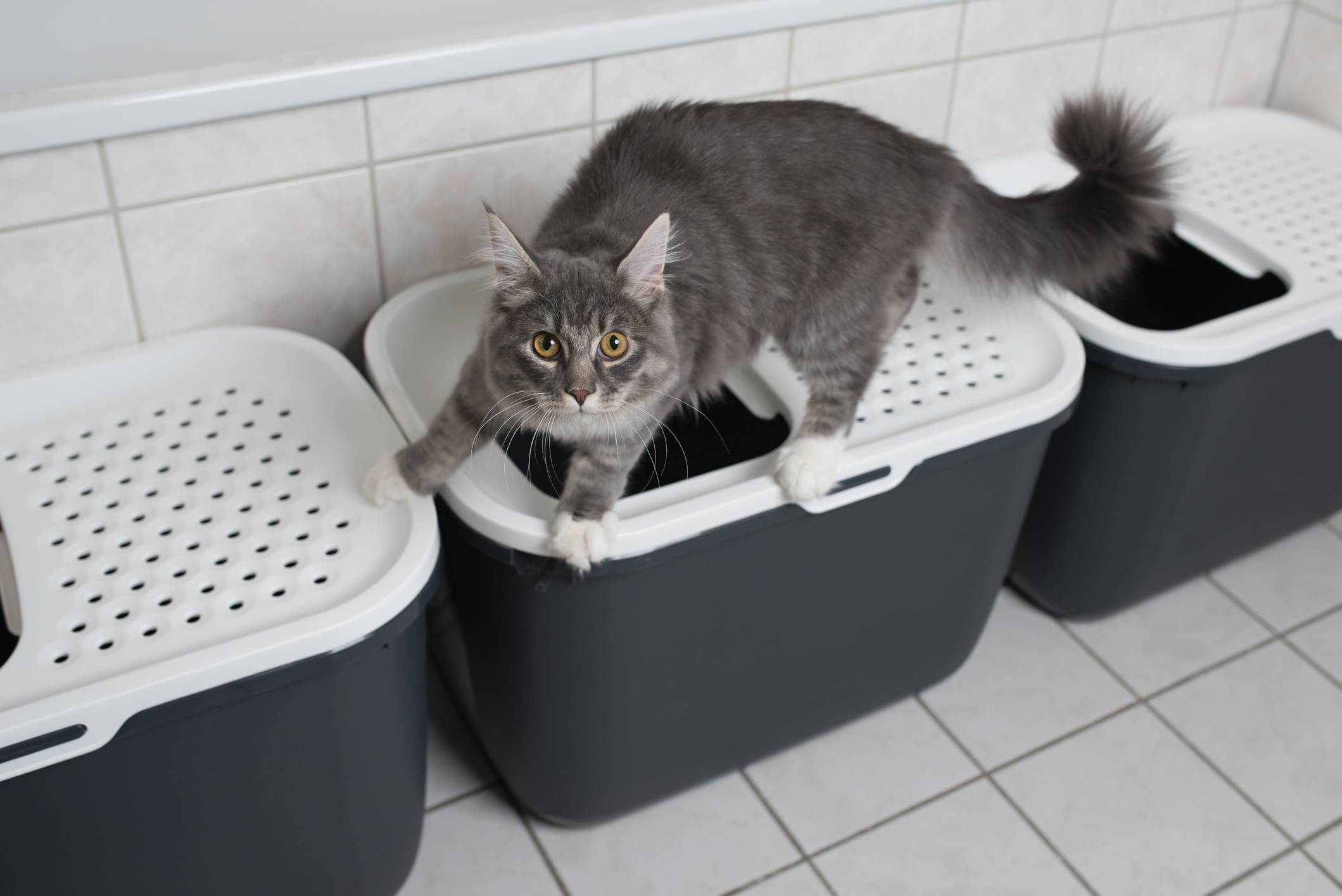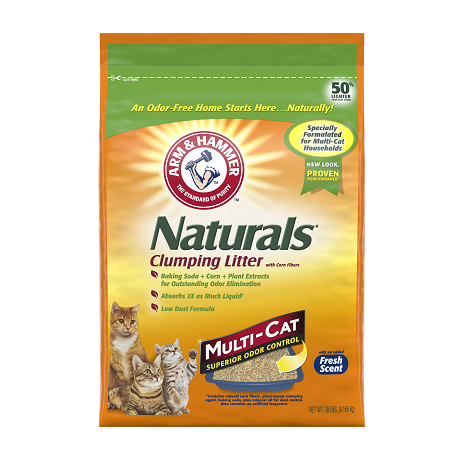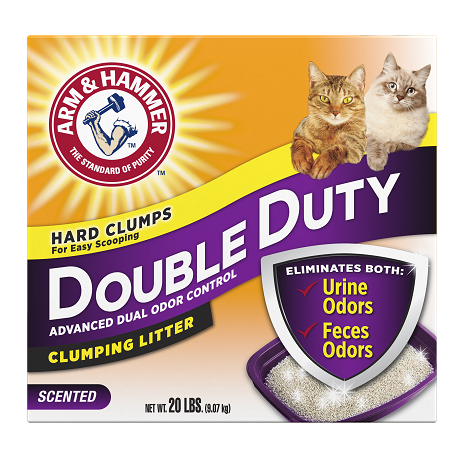Basic Litter Box Setup
To set up a litter box for your cat, you will need:
- A properly sized litter box that your cat will use
- A type of litter that your cat prefers and you can live with
- A litter box scoop
- A location for your litter box that helps your cat feel safe and private
- A plan for keeping the litter box clean and tidy
- Optional: litter box tracking mat, litter box deodorizer
How Many Litter Boxes for One Cat
People often wonder, “how many litter boxes do I need,” for one cat or many. Knowing how to set up a litter box involves a bit of math but don’t worry; it’s simple addition. You should have at least one litter box per cat, plus one, if you can fit it in your house.
If you only have one cat, you can probably get away with a single litter box because there won’t be any other cat using it. However, if your house is quite large with an upstairs and downstairs, it’s best to put one litter box on each floor. It’s a long way to go from your upstairs master bedroom to your basement, and your cat – especially if they are very young and distractible or older and less able to travel long distances – might find an alternative spot to use rather than making the trek.
If you have a multi-cat household, be sure you have the number of boxes equal to the number of cats, plus one. Cats can get territorial about litter boxes and try to claim one for their personal use. You also can run into the issue of both cats needing to use the box at the same time, or one not wanting to go immediately after the other finishes.
Multiple boxes prevent these issues and keep everyone happy. Place the boxes well away from each other, to avoid conflicts about territory or having them seen as one large box.
Litter Box Size & Characteristics
When choosing a litter box, there are several things to consider. You’ll want to think about the size of the box, the height of the sides, the entry point, and whether it will be covered or uncovered. You and your cat might disagree over certain factors, especially over hiding the litter box.
Covered or Uncovered Litter Box
Most humans do not view a litter box as an architectural feature or an aesthetic accessory to their homes. Many cat owners prefer not to see the litter box, so they opt for a litter box with a cover. Some even invest in a piece of furniture or “litter box hider” to make the cat bathroom blend with their décor.
Your cat, however, might not think this is a great idea. Some cats, especially larger ones, prefer open-top boxes. Your cat needs enough room in the litter box to move around and find the perfect spot to pee or poo. A covered box can limit their mobility and restrict them from certain positions that would be possible with an open-top box.
Cats also need to feel safe when taking care of the important business of eliminating. A litter box with a top might feel too confined or make your cat feel that there isn’t an easy escape route. This sense of dread can keep them from using the covered box.
Additionally, cats can have sensitive upper respiratory systems, and they have keen senses of smell. A covered box can cause your cat to breathe more dust from the litter and can trap odor inside the confined area. Both of these can make your cat not wish to use the box.
Plus, a covered litter box is much easier to forget about as it may be “out of sight, out of mind.” A dirty or smelly litter box that you have forgotten to scoop for a couple days may disgust your cat and cause her to seek a new place – like your carpet or laundry basket -- to take care of business.
Height and Size of Litter Box
Some cats, especially females, may pee “high,” meaning they do not squat very low. Shallow litter boxes with low sides may not contain the urine, even if the cat’s physical body was in the box! You’ll want to switch to a box with higher sides, or a top-entry box that your cat has to jump up into to enter.
A higher-sided box is not a good idea for an older cat who may not be able to jump inside, or a kitten who also will have difficulty climbing in to use it.
If you have a kitten, it’s okay to have a smaller litter box. Just remember to reevaluate the size of the box once your small floof becomes a full-grown cat. If your cat cannot comfortably turn around in your litter box and squat without any of his body hanging over the sides, it’s time for a bigger box. Hopefully, the bigger box will fit in the current location, because moving a litter box can stress your cat and create litter box problems.
Litter Box Liners
Almost universally, cats do not like litter box liners. They restrict their ability to scratch the litter, and may cause cats not to use the litter box. If they do use it, often their claws will rip holes in the liner, defeating its purpose anyway. Save yourself this unnecessary expense.
Where to Put Your Cat Litter Box
“Where should I put my cat’s litter box?” is a common conundrum for cat owners. You’ll need to find the right place to keep the litter box that works for both you and your furry friend. Figuring out where to put the litter box in a small apartment can be tough, but these tips should help.
Usually, litter boxes work best on non-carpeted surfaces, because they are easier to clean. Bathrooms, laundry rooms, basements, mudrooms, and even corners of a kitchen, such as near your garbage receptacle, are favorite spots for cat owners.
Limitations in your living space may make figuring out where to keep your litter box more challenging, but look for these conditions to find the best place for your litter box:
- A quiet location, ideally in a corner. This will allow your kitty to keep an eye out while doing their business.
- Away from your cat’s food and water dishes. Cats are fastidious and don’t like to poop where they eat.
- Away from where your cat usually sleeps – and away from your bed as well.
- Away from high-traffic areas, although not so far that your kitty has to go a long way to find it.
- Away from noisy household appliances. Your cat will likely be apprehensive about the sounds coming from the washer, dryer, or dishwasher.
- In an area that is accessible 24/7. Make sure that a door can’t accidentally close and lock your cat out from their litter box.
- A safe area. Ensure that there are no piles or stacks of things that could fall on the litter box, especially if your cat decides to explore.
- Away from air vents and drafts. Your cat may be startled by the sudden breezes that are sometimes present at their box and refuse to go near again.
Choose a litter box location and leave it there. Moving your litter box around will confuse your cat and potentially cause them to urinate or defecate elsewhere. If you must move your litter box, do so over time, by moving it a couple of inches each day until it reaches the new spot.
Place your litter box scoop near the litter box for easy access for your daily ¬– or twice daily ¬– litter box clean ups. If you selected a litter box tracking mat, place it in front of the litter box to help trap any dust or litter that may be knocked out of the box while your cat scratches or tracked out on their paws and between their toe beans.
Filling the Litter Box with Litter Your Cat Loves
Every cat has litter preferences, and you will too. You’ll need to land on a litter that your cat will use without complaint and that you won’t mind toting around and cleaning up. If you’re worried about how to keep the litter box from smelling up your house, choosing the right litter and frequent scoops will be top on your list.
Most cats and humans prefer a clumping cat litter. Humans like it because the urine clumps into scoopable masses that they can remove easily when cleaning. Cats like it because no urine or strong odor is left behind after scooping.
There are several types of clumping litter, whether made from clay, lightweight clay, pine, or other sources such as corn, wheat, recycled paper, grass, or a combination. Some cats are finicky about certain textures of litter, while others are more easy-going. Try a couple different kinds of litter and see which kind works best for you and your feline friend.
The scented or unscented question is another area where you and your kitten might disagree. Humans often want to use scented cat litter to control litter box odor. However, some cats are sensitive to strong scents and may turn up their noses at artificially scented litter.
Some cats, however, don’t mind scented litter at all. If you’re lucky enough to have one that isn’t particular about scents, feel free to use the odor control you prefer. If you’re especially worried about the litter box smelling up your house, you can add a litter box deodorizer after you scoop for additional control. Keeping your litter box regularly scooped and cleaned is the best defense against odor.
Once you have the ideal litter box setup for you and your feline, try not to change it! Moving the litter box, experimenting with the type of litter, or changing your frequency of cleaning may stress your kitty and create the unwanted problem of going outside the litter box.
Should that occur, check out our article on Litter Box Issues, and a vet visit may be in your future. Going outside the litter box is a sign of distress for your kitty, so take it seriously.


